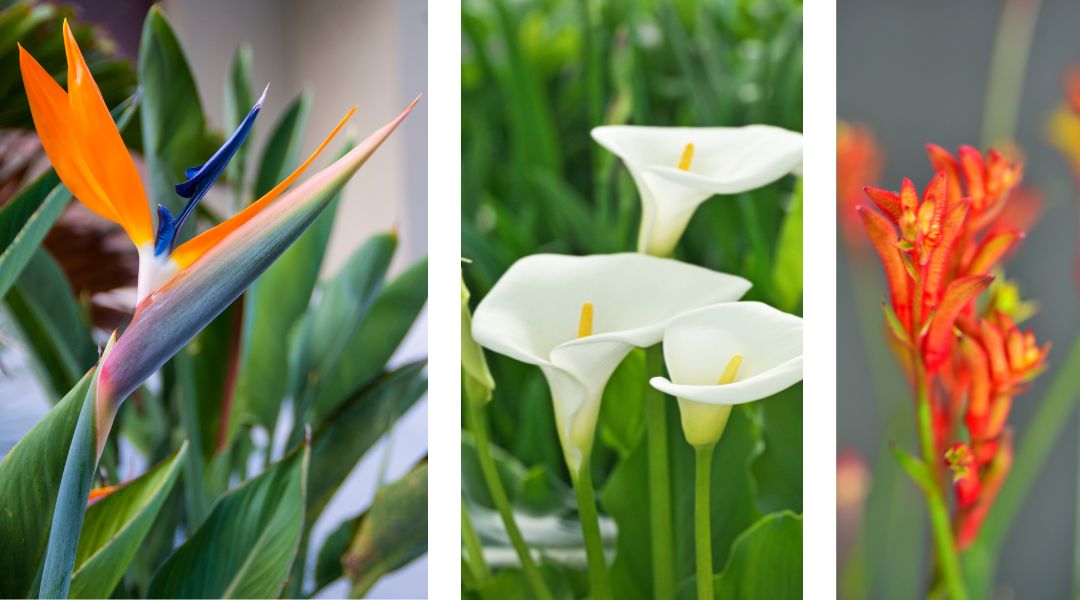These are also flowers with very long stems. If you need a flower for that 3’ vase, these are the flowers for you. Get to cutting if you are lucky enough to have these three beauties!
1. Bird of Paradise
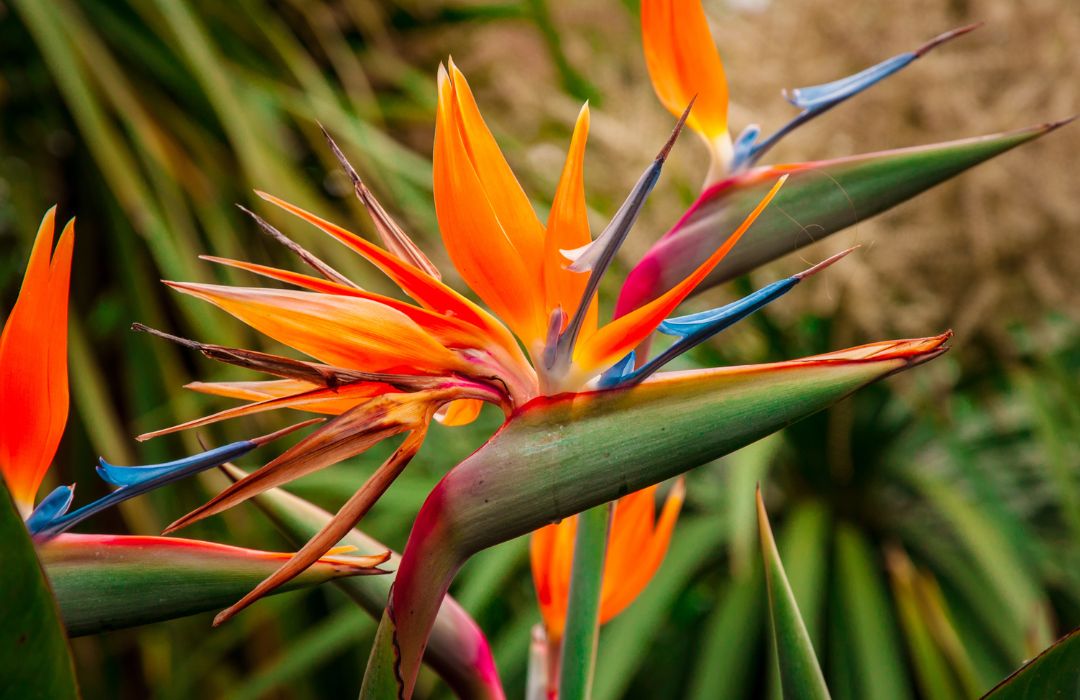
Let’s start with the bird of paradise (Strelitzia Reginae). I’m sure you have seen this plant around with its large leaves and funky blossoms that resemble a bird.
Outdoors, these plants do best in USDA zones 10 and 11. Which is perfect for me and my blog partner Karen, because we are tucked into zone 10. When we talk USDA zones in planting we are refereeing to the USDA Plant Hardiness Zone Map, which very helpfully breaks down the United States into different zones relating to a plant’s ability to thrive in that location. This system uses winter temperatures, hardiness to cold weather, as its guide. According to this map, Karen is in 10a and I’m in 10b, even though we live less than 2 miles away from each other.
Another approach to zoning is used by Sunset, which takes more elements into account than just hardiness to cold. Sunset also considers heat tolerance, rainfall, wind, and humidity. Using this framework and map, I am in zone 21 and Karen is in Zone 23 (as noted above, we’re different zones even though we live walking distance from each other).
But don’t fret! If you don’t find yourself in the preferred zone, you can grow bird of paradise indoors.
Bird of paradise gets to a height and width 4-6’. This includes the flower! You can get very long stems on these blooms. In a vase, the bird of paradise flower can last up to two weeks.
The flower of the bird of paradise has orange color, along with some white, and striking purple or midnight blue. You can complement these flowers, in a vase or in the landscape, with the orange of pincushion flower (Leucospermum cordifolium) and the purple of a purple iris or a purple delphinium. Plant it near “Orange King” bougainvillea vine (Bougainvillea x buttiana “Orange King”) to bring out the orange in the Strelitzia. This plant looks good with other drought tolerant plants like agaves, rosemary and star jasmine. Another one of the beauties of Strelitzia reginae is that it is a lush and tropical looking plant, while being drought tolerant and low maintenance.
You may find yourself with an unopened bird of paradise bloom. If so, don’t worry. Check out this video (at the 28:37 min. mark) to learn how to pop out the color!
2. White Calla Lily
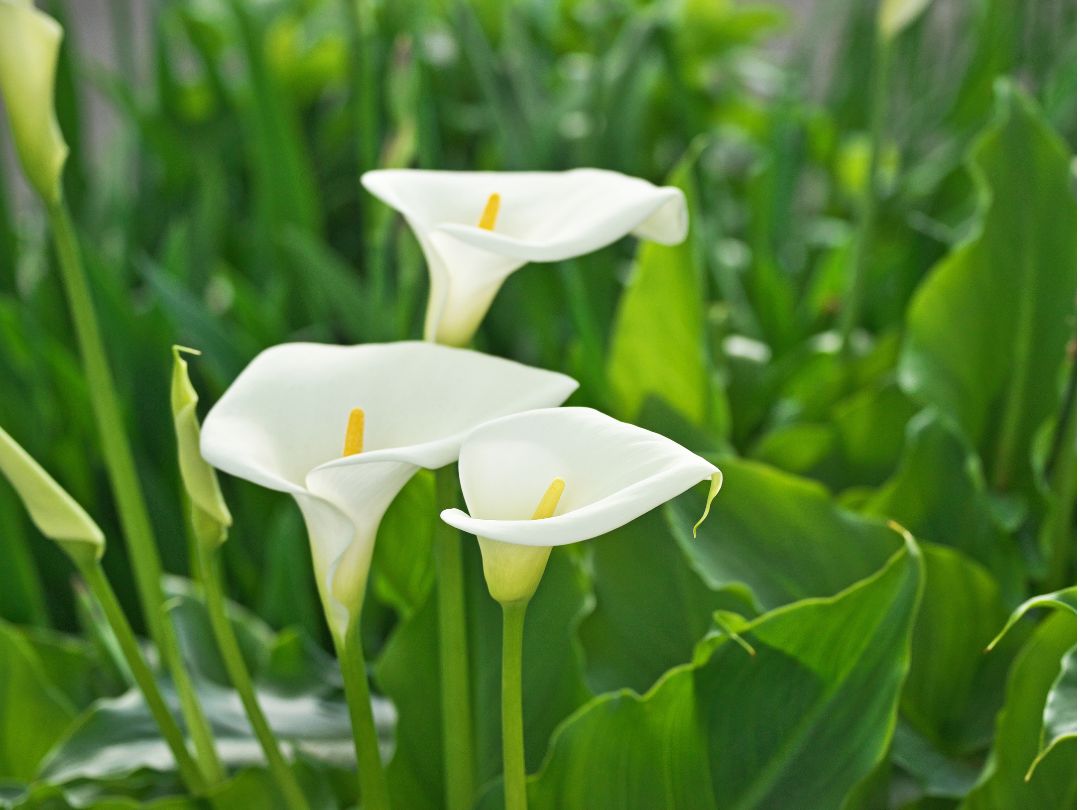
If there is ever a partially shady and moist area in a garden, I consider planting calla lilies. While this plant will survive year-round in a mild climate, it won’t always look good year round — so I make sure to have a plant in front of it (and not depend on it as a foreground plant).
There are many colors of calla lily to choose from, I always start with the traditional white calla lily. This may be because, according to Victorian flower lore, calla lilies symbolize devotion, purity, and bliss. Brides carry these symbolic flowers in their bouquets. The purity of a white calla lily and its long history seems a fitting start in a cut flower garden.
Calla lilies are not true lilies, but members of the Arum family. The botanical name of a true lily would be Lilium. The botanical name for calla lily is Zantedeschia. Which is an absolute mouthful. They get this name in honor of the Italian botanist Giovanni Zantedeschi. The common name, calla, is derived from the Greek word for beautiful. In the garden, an indoor pot, or in a vase, these are beautiful flowers.
By flower, in this case, we mean the yellow spadix (flowering spike) in the center of a bright spathe (leaf-like curved bract) that surrounds it. So, while we refer to both as the flower, the actual flower can be found with many other flowers on that yellow spadix.
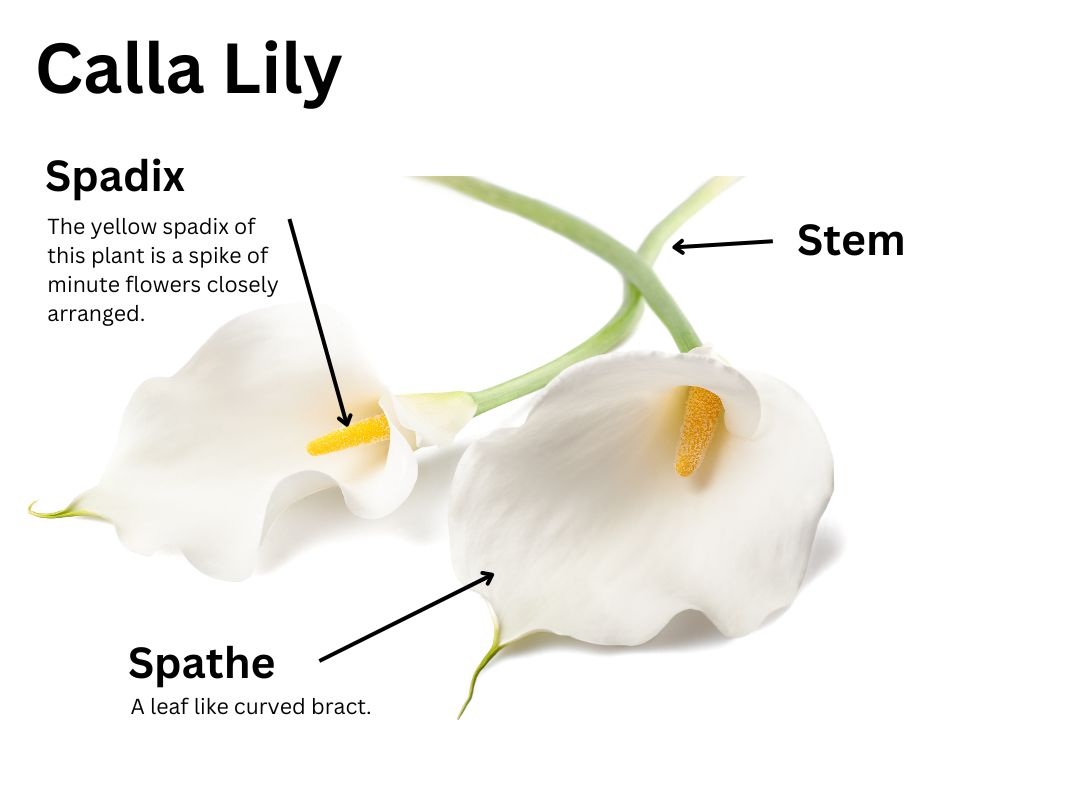
The leaves of calla lilies are long and green and, in some varieties, flecked with white. Calla lilies are deer resistant, but voles and squirrels love to munch on the rhizomes. Japanese beetles, slugs, and snails may also be a problem.
That said, this is a surprisingly tough and low maintenance plant. It comes from Africa, and the areas where it grows alternate between marshland and dry landscape. Calla lilies are hardy in USDA zones 8-10. In cooler climates, you want to give them full sun. They are a long-lasting flower. In a vase, this flower can last up to two weeks.
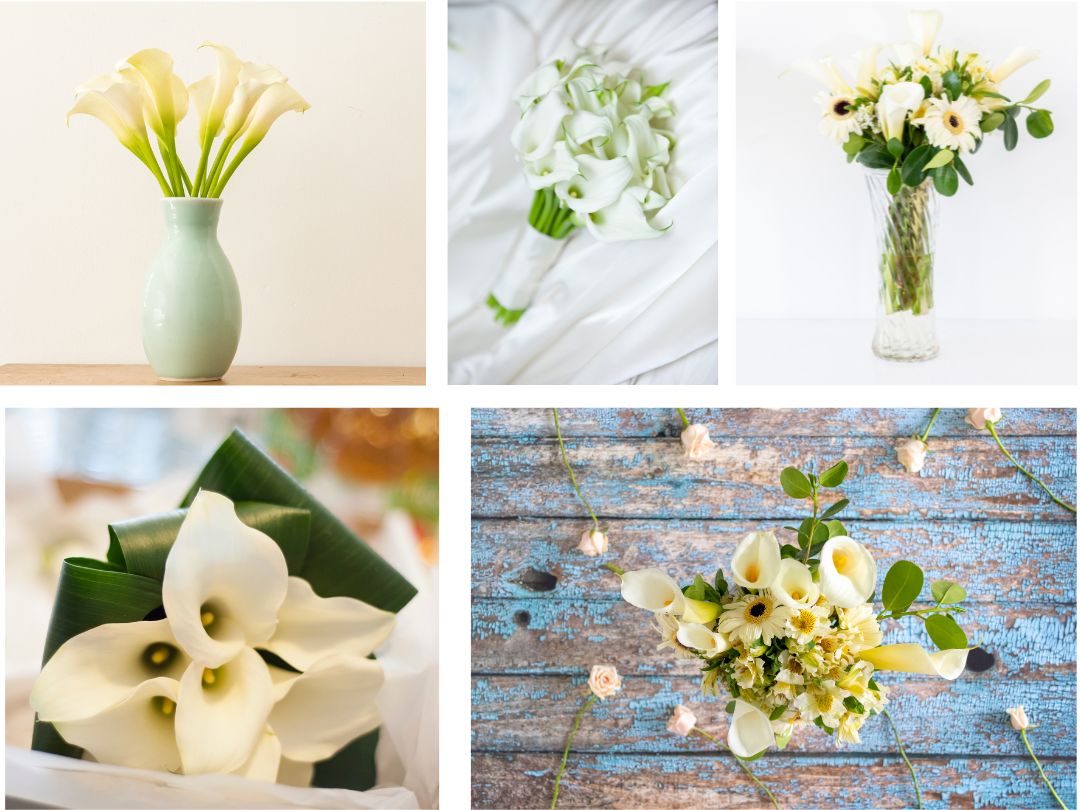
There are many different colors of calla lily but I want to concentrate on the traditional white Zantedeschia, Zantedeschia aethiopica.
Types of White Calla Lily
Zantedeschia aethiopica: This plant can gets 2-4’ tall and about 4’ wide. It produces large calla lily flowers in the spring and summer.
Zantedeschia aethiopica ‘Gene’s Giant’ (Giant Calla Lily): This white calla lily is a biggy at about 5’ by 5’.
Zantedeschia aethiopica ‘Green Goddess’: This calla lily has white, but it also has bright green on the flower’s tip and a mottled green closer to the flower’s center. (Technically, this part of the plant is called the spathe.) While this is not a traditional white, it’s so interesting it’s worth noting. It’s also referred to as ‘Mint Julep’ and Green Calla Lily. Green Calla Lily gets 2-4’ tall and 4’-5’ wide.
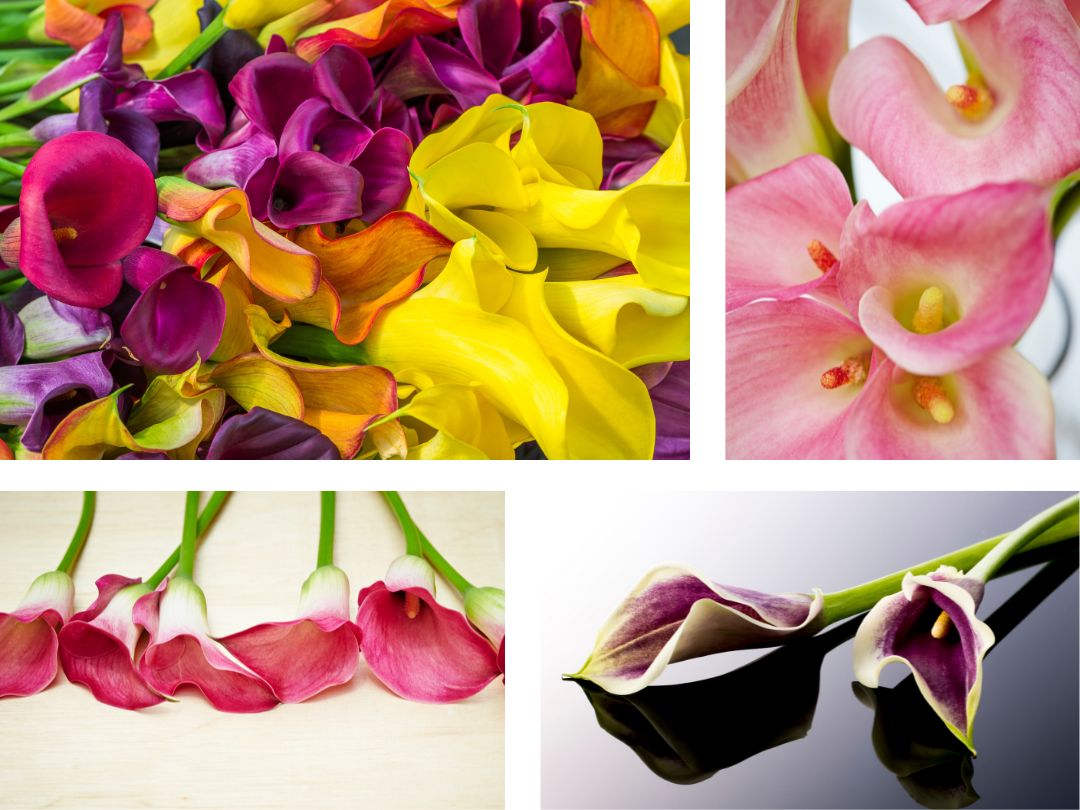
Calla lilies can also be found in various shades of orange, pink, purple, red, or yellow. Plant breeders are continually hybridizing calla lilies, developing new flower and even foliage colors.
It should be added that this plant is toxic to cats, dogs, and horses. In case you have a horse.
3. Kangaroo Paw
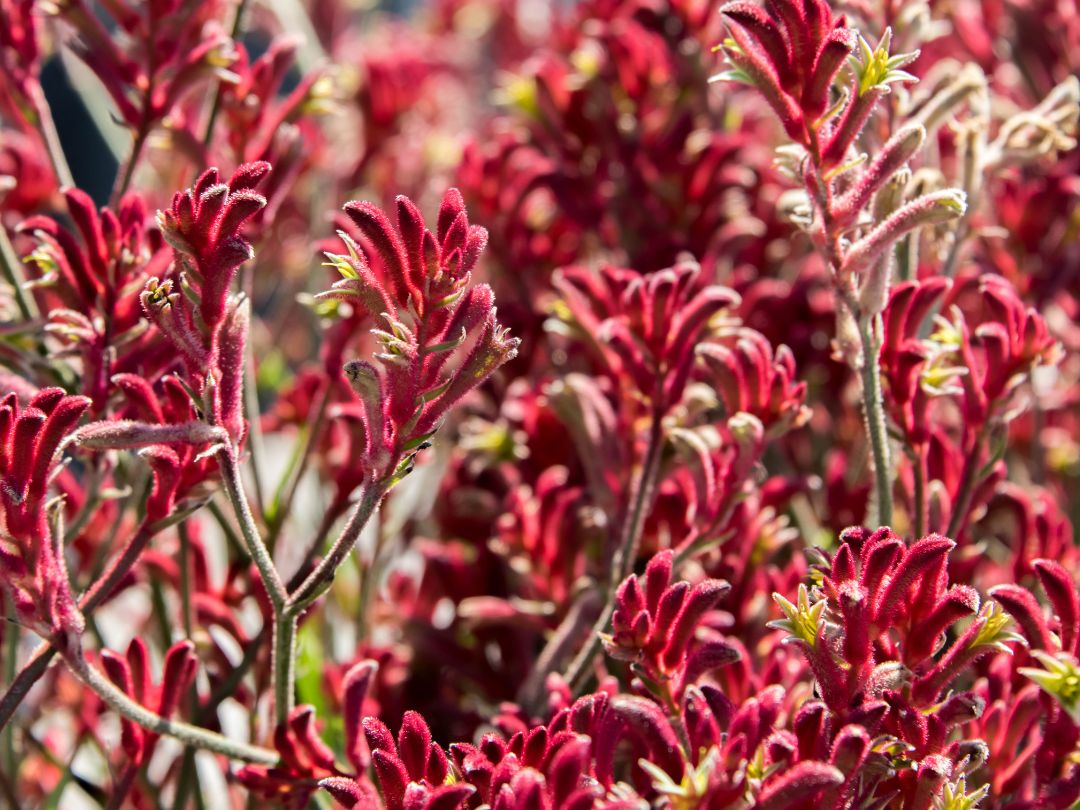
Ohhh, the glorious choices of the elegant kangaroo paw. All you need is a small patch of sun to grow one. It’s also best to be in USDA zones 9, 10 or 11. You can also grow them in containers outdoors and in. You will want to keep the potted kangaroo paw in moist but well draining soil.
Don’t worry about your pets! If you need or just want to keep your Anigozanthos inside it’s good to know this plant is non-toxic to cats and dogs.
Types of Kangaroo Paw
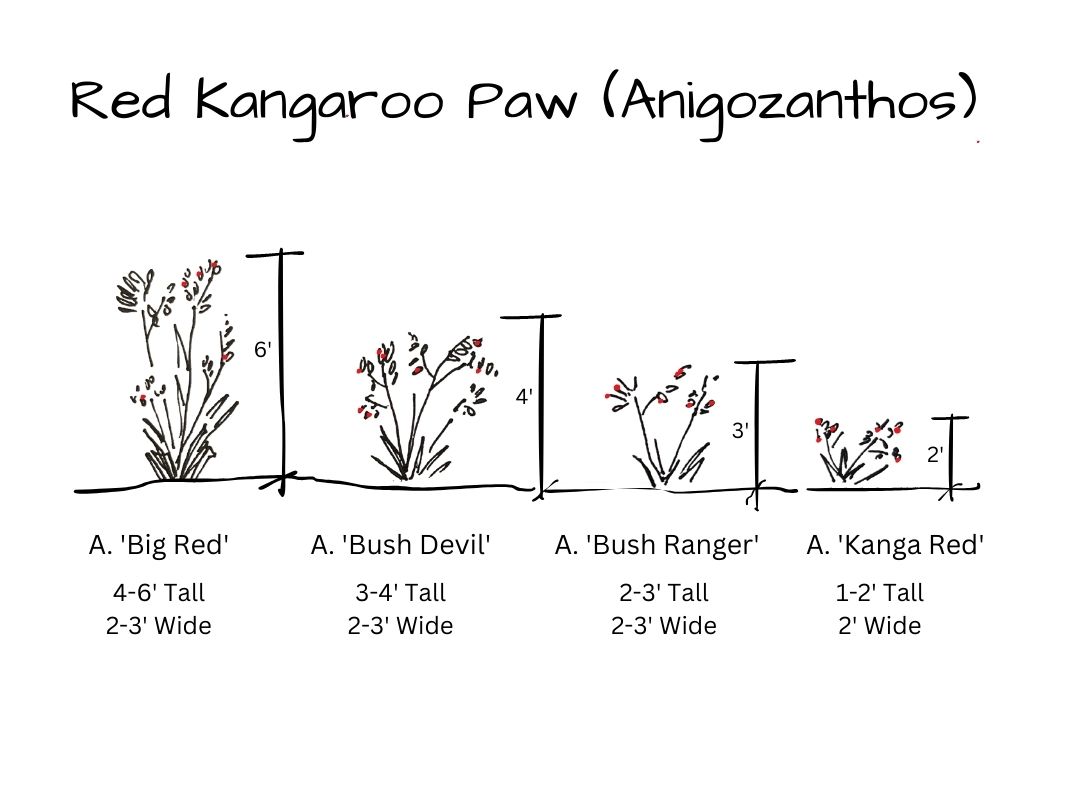
TALL: In Australia, the native home to Kangaroo Paw, the plant blooms most the year. This soft velvet-like flower has a long shelf life on or off the plant. Here are some options for a few tall ones:
- Anigozanthos ‘Big Red’ Kangaroo Paw is indeed a big red Kangaroo Paw. This flower rises to 4-6’ tall and only get to be about 2-3’ wide.
- Anigozanthos ‘Orange Cross’ Kangaroo Paw has orange flowers that get 4-5’ tall and 2-3’ wide.
- Anigozanthos ‘Bush Dawn’ Kangaroo Paw has yellow flowers. This plant gets 4-6’ tall and 1-2’ wide.
- Anigozanthos ‘Landscape Bicolour Purple’ (Bicolor Purple Kangaroo Paw) with lilac purple flowers with pinkish stems. This plant gets 4-5′ tall and 2-3′ wide.
MEDIUM-SIZED: Medium sized Kangaroo Paw, which get to 3-4’, include ‘Amber Velvet’ (orange), ‘Tequila Sunrise’ (orange), and ‘Bush Devil’ (red).
SMALL: Small kangaroo paw plants, 2-3’ tall, include ‘Golden Tango’ (orange) and ‘Bush Ranger’ (red). There are also minis! You have to wonder how low it can grow.
DWARF: There are dwarf kangaroo paw! Anigozanthos ‘Bush Pearl’ (pink) (bright candy pink!) is about 1 ½’ tall. Anigozanthos ‘Kanga Red’ *(Dwarf Red Kangaroo Paw) only gets to 1-2’ tall and 2’ wide.
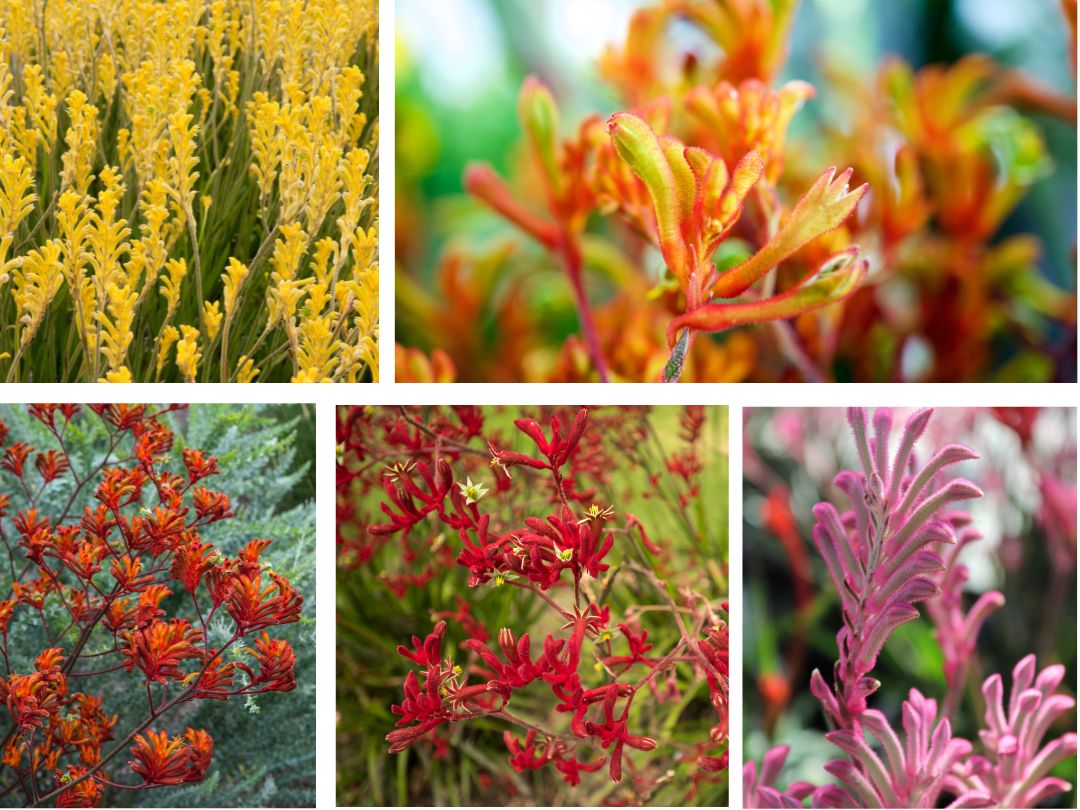
Where to buy these plants for easy cut flowers
You should always check your local nursery for your plant needs first. Whether real or fake, there is no shortage of places to purchase these plants!
Bird of Paradise (Strelitzia Reginae)
Try Home Depot. They sell them for the outdoors and potted for the indoors. They also sell artificial bird of paradise plants for those tricky indoor locations.
Feeling lazy? In my area you can get a potted Bird of Paradise shipped to your home or office from Bloomscape.
Calla Lily (Zantedeschia aethiopica)
Home Depot has a wide variety with whites and tons of color choices. Wayfair cuts to the chase and sells artificial cut flowers.
Kangaroo Paw (Anigozanthos)
Big Red and others can be found at Plant Express and Home Depot. You can purchase a large assortment of freshly cut kangaroo flowers or get a bunch or preserved and dried cut kangaroo paw flowers.
We partner with select companies whose products and/or services we love. Some of the links on this page may be affiliate links. If you purchase an item using our affiliate link, we may receive a small commission (at no added cost to you). We appreciate your support.

